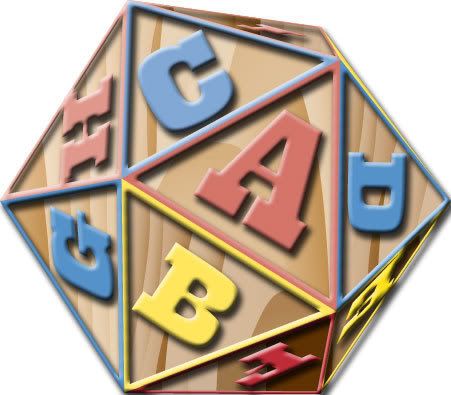Bad 80s movie quotes aside, let’s start off with five-year olds. What a great time of life! Their world is starting to get bigger and more wonderful and, sometimes, even a little bit scarier. This is a very high-level overview of five-year olds and is not meant to perfectly describe every child, since no two people are exactly the same. And yes, I understand your child is gifted and has advanced much further than what is described here. Humor me anyway...
Is very active. Has a good sense of balance, and is becoming more coordinated. Can kick a ball, walk in a straight line, hop, skip, and march. Enjoys drawing, coloring, and participating in activities and games. Is learning to lace and tie shoes and button and zip clothing. Recognizes some letters, numbers, and words. Likes to pretend to read and write. May be learning to read. Is talkative. Ask questions, makes comments, and gives answers that show increased understanding. Is good at problem solving. Is curious and eager for facts. Is beginning to distinguish truth from fantasy. Has a short but increasing attention span. Likes definite tasks. Enjoys jokes and tricks, but cannot laugh at himself or herself. Likes stories, singing, poetry, and dramatizations. Is friendly and eager to please and cooperate. Is beginning to prefer being in small groups of children, but may prefer a best friend. Creates less conflict in group play. Is beginning to want to conform, and is critical of those who do not. Is beginning to understand rules, but often tries to change them for his or her benefit. Centers interests on home and family. Is affectionate towards adults, and wants to please them. Gets embarrassed easily, especially by his or her own mistakes. Wants to be good. Is learning the difference between right and wrong. Sometimes tells untruths or blames others for his or her own wrongdoings because of an intense desire to please adults and do what is right.
What does this mean as far as playing games?
Engage the child in physical activities. Who said all games have to be played at the table? Bodies are wonderful things…give them an opportunity to use it. At the game table, being able to touch and move game pieces can be a big attention getter/keeper. Find games that “show” action and movement. Allow the child to ask questions and solve problems. Jigsaw puzzles (although not technically games) might fit the bill. Warning: riddles and problems that are excruciatingly simple for adults may prove to be very difficult for a five-year old. Make the answers extremely obvious so they have lots of practice with the concept of finding solutions on their own. Role-play! What a great time to “play pretend!” Kids haven’t had years of inhibitions and peer pressure to hold them back. This is a perfectly natural extension to what the child already does. You just provide a VERY light framework of rules (VERY LIGHT…got it?) And this is not the time for Lord of the Rings epic stories here. Take a look at the length of most fairy tales. Depending on the size of the font, 2-3 pages tell the whole story. Short and simple. Be sensitive to the child’s need for your approval. Cooperative games can go a long ways towards avoiding any hurt feelings. Don’t fool yourself into thinking that competitive games will prepare them for the Real World. We’re talking five-year olds here. The Real World will crush their fragile spirits soon enough when they’re teenagers. For now, let them have fun. (Notice I’m not saying, “Always let them win” – it’s a fine line between “loved” and “spoiled”. Game wisely.)
Games in the USA for this age group seem to focus on games such as Candyland, HiHo Cherry-O, Chutes and Ladders, and Cooties. I suppose those games have a time and place. But you have to admit they are a bit dull. For adults. The key to success in gaming, then, is to follow the lead of fairy tales – keep it short. That is my biggest problem with the above-mentioned games; bad luck can make them drag on FOR…E…VER. Luck-based mechanics are fine and even somewhat desirable – they tend to even out the adult/child skill gap. But look for games that don’t overly delay the end of the game because of bad luck.
Unless the child was very involved in games prior to this point, learning how to wait for your next turn can be a challenge. Be patient. Also, they won’t always pick out the best strategy (sometimes on purpose). That is okay. In fact, don’t even worry about strategy at this age. Let them play completely randomly if they want. Let them experiment. Be patient. And keep it short (have I mentioned that yet?).
Rebekah is our five-year old. She loves to be involved in games even if she doesn’t understand what is going on. There is a tendency for us (as her parents) to suggest for her to “be on someone’s team” (meaning: sit next to them but not really play) when we play games too advanced for her – but she is of the age where she really wants to have her own color/team/cards/whatever. Some of her favorite kid games include: Snails Pace Race, Chicken Cha-Cha (known by many other names – we have a DragonTales themed one), Kids of Catan, Monopoly Junior (it’s not a bad game (i.e. short) if played by the rules, honestly), Faery’s Tale RPG, Shadows RPG, a variety of “mini games” in the Mario Party series for the Nintendo, and good ol’ fashioned Hide & Seek.

No comments:
Post a Comment